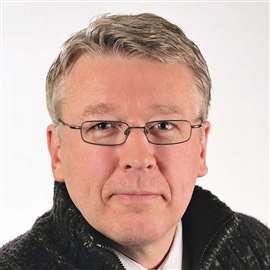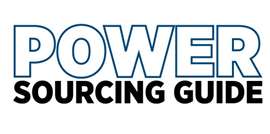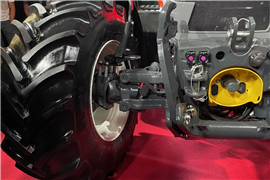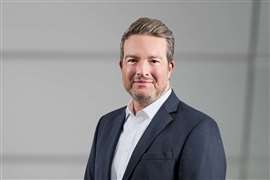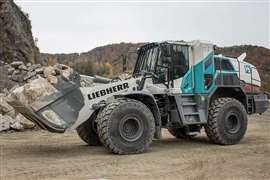Read this article in Français Deutsch Italiano Português Español
Roland Berger weighs challenges, opportunities in off-highway electrification
18 February 2025
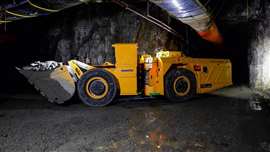 Komatsu’s new WX04B battery-electric load-haul-dump (LHD) machine undergoing testing at the Norcat Underground Centre in northern Ontario, Canada. (Photo: Norcat)
Komatsu’s new WX04B battery-electric load-haul-dump (LHD) machine undergoing testing at the Norcat Underground Centre in northern Ontario, Canada. (Photo: Norcat)
In a recent webinar, experts from global consulting firm Roland Berger discussed the current and future state of equipment and vehicle electrification. After focusing on electrification specific to on-highway commercial vehicles, Martin Weissbart, a principal for Roland Berger, addressed the electrification landscape for off-highway vehicles and equipment.
“I’m part of the investor support practice, but I also have a second chair I’m sitting in,” he said, introducing himself. “I’m also part of the off-highway team in Europe.”
Weissbart noted that while trends in off-highway electrification tend to mirror many of those in the on-highway vehicle space, the off-highway industry is still in the early stages of decarbonization. It is also more complex in terms of product configuration and powertrains.
“For an OEM, it becomes increasingly difficult to define an engine strategy based on the entire portfolio they’re serving,” he said. “That’s why it needs to be a careful strategy of decarbonization prioritization — what needs and what can be converted from a classically ICE (internal combustion engine) solution toward a decarbonized solution on a [alternative] propulsion type.”
Cost and Infrastructure
Off-highway electric vehicle and equipment adoption does face certain headwinds.
“It’s obviously the current downcycle of agriculture and construction machinery, which we see also continuing in ’25, especially in Europe,” Weissbart said. “Agriculture and construction will most likely at a minimum move sideways. We see an increase in the market coming in ’26.”
Among other obstacles, he said, “On the one hand, acquisition costs. Also infrastructure.”
Regarding the latter, Weissbart added that it wasn’t necessarily centralized depot-charging infrastructure, such as that used by rental agencies, or applications that can capitalize upon other on-highway charging points used for electric passenger or commercial vehicles.
Instead, he said the challenge was with infrastructure in “remote areas where construction, where also mining, plays a key role. And the integration of the system. These are the key challenges OEMs as well as the end customer is facing that currently put a little bit of a break on the rollout of electrification.”
Total Cost of Ownership
There are a variety of forces at play driving the transition, with the regulatory environment of course being a key external driver. This includes indoor emissions policies for machines used in material handling as well as aerial work platforms, which help drive electrification.
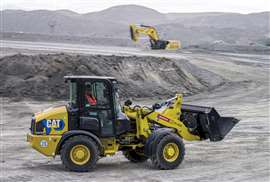 Caterpillar’s first fully electric wheel loader - CAT 906e (Photo: Zeppelin Rental)
Caterpillar’s first fully electric wheel loader - CAT 906e (Photo: Zeppelin Rental)
However, one internal driver is critical to the electrification landscape: total cost of ownership (TCO).
“That not only is based on the vehicle costs but also the operational costs, the maintenance costs,” Weissbart said. “So, electricity prices in various regions will drive significant TCO next to penalties — regulation pushes — from the government.”
Many categories of smaller, lower horsepower electrified construction equipment from China, including small wheel loaders and telehandlers, are already showing positive TCO.
“We see mini excavators will lead the way of electrification,” Weissbart said. “This is both in Europe as well as the U.S. But the TCO positiveness mostly will come in the early ’30s, in the mid ’30s even.”
For larger vehicles requiring more horsepower, such as mining trucks, Weissbart noted ongoing pilots, adding that the regulatory environment will drive positive TCO.
“For example, in Australia, there’s a very good environment for TCO-positivity for mining trucks or rigid haul trucks already coming in the early ’30s,” he said.
However, Weissbart acknowledged that electrification is not an ideal solution for all off-highway equipment. Articulated dump trucks, motor graders and crawler dozers will be more challenging to electrify.
“The larger vehicles with the larger horsepower requirements — they need other alternatives and the broader spectrum of powertrain solutions that help, not only to operate but also to cater to the use cases they’re operating in,” he said.
Bridging Technology Gaps
Weissbart said that when talking with equipment OEMs around the world, he hears that while electrification will play a key role in decarbonization, its pace is slowing.
“We saw significant and very strong, ambitious targets for major OEMS where electrification goes for their compact ranges, where they want to move going forward,” he said. “And we saw that similarly in the passenger car and the trucking space. OEMs are stepping a little bit back and really reevaluating what is the right strategy — [what] decarbonizing and not decarbonizing at all means.”
This is the result of a lack of valid solutions for a variety of product categories as well as the aforementioned concerns about infrastructure readiness. Weissbart said bridging solutions will be necessary to address these gaps moving forward.
 XCMG’S NEW XGA20H Hybrid Boom lift. (Photo: XCMG)
XCMG’S NEW XGA20H Hybrid Boom lift. (Photo: XCMG)
“As bridging technology, hybrid solutions are widely spread and will continue to be integrated into the systems,” he said. “This has various aspects.”
Weissbart noted that hybrid technology can be used in the drivetrain, such as in the case of e-motor integration with IC engines, either in parallel or series, to improve fuel efficiency and emissions. Motion systems and auxiliary systems are also excellent targets for electrification.
“If it’s for example a swing drive, an oil pump, HVAC systems where we see more used cases for electrification to reduce emission as well as diesel consumption,” Weissbart said.
Hybrid solutions are appropriate across the board for a wide variety of vertical markets, including mining, construction, agriculture and forestry. According to Weissbart, they make it possible to decarbonize particularly challenging applications while accelerating positive TCO.
“We made a study on combine electrification,” he said, using ag equipment as an example. “It would require a 4-ton trailer for just the battery. So, there you need a different means of decarbonization.”
Weissbart continued, “On the farm ecosystem, where you have telehandlers, where you might have a homogeneous driving pattern, where you have a use case of around four hours on each machine — for the wheel loader, telehandler and various other aspects — this can be electrified quicker and the TCO will pay out earlier.”
OEMs large and small across all off-highway equipment vertical markets are driving the trend in hybrid solutions, Weissbart said. Among those, he noted four OEMs in particular driving the trend.
“We mapped the volume of patents that are related [to hybrid technology] from 2000, so over the last two decades,” he said. “And you see a significant push from Caterpillar, Komatsu, Hitachi as well as Volvo.”
2025 and Beyond
This year and into the future, Weissbart noted a number of off-highway electrification trends.
“There will be a coexistence of hybrid and fully electric offerings,” he said. “So, there will be even a more complex portfolio of engine offerings.”
Weissbart added, “Electrification in compact machinery is something that will drive going forward, especially in Europe and America in the mini excavators and the smaller wheel loader segment.
There will be a significant investment in the electrification environment, he said, with investments in technologies regarding battery and energy management.
“The entire ecosystem will evolve and will learn from other segments, and there will be strong collaboration across industries,” Weissbart said.
POWER SOURCING GUIDE
The trusted reference and buyer’s guide for 83 years
The original “desktop search engine,” guiding nearly 10,000 users in more than 90 countries it is the primary reference for specifications and details on all the components that go into engine systems.
Visit Now
STAY CONNECTED




Receive the information you need when you need it through our world-leading magazines, newsletters and daily briefings.
CONNECT WITH THE TEAM

